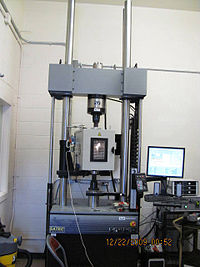
Photo from wikipedia
Abstract Building Information Modelling (BIM) is a digital representation of the physical and functional characteristics of a facility and is used to manage an entire construction process (design, construction and… Click to show full abstract
Abstract Building Information Modelling (BIM) is a digital representation of the physical and functional characteristics of a facility and is used to manage an entire construction process (design, construction and management across the entire lifecycle). BIM can be regarded as both a digital representation of a building and a store of data with which to facilitate interoperability and the exchange of information throughout the lifecycle of a structure. Buildings sustain economic losses during their lifecycle due to ordinary maintenance operations and unpredictable events. These events reduce the structural performance of a building and highlight the need for financial investment. The costs of maintenance operations are usually accurately defined, but other expenditure is not as easy to evaluate when events are uncertain. A lifecycle cost (LCC) analysis of buildings exposed to seismic risk is a critical issue in structural engineering. Expected losses, including initial and post-earthquake repair costs, are an important parameter in structural design. Herein, a simplified method based on a semi-probabilistic approach is implemented in a BIM model to evaluate the economic performance, and economic losses, of a building exposed to seismic risk. A BIM procedure is implemented in a case study to improve the feasibility of this process and to deal with the large amount of data concerning the damage to and cost analysis of the components that constitute the facility. Furthermore, this specific BIM tool for the economic loss assessment has been embraced in a wider methodology aimed at optimizing the seismic retrofit strategy, taking into account both safety and economic features.
Journal Title: Automation in Construction
Year Published: 2019
Link to full text (if available)
Share on Social Media: Sign Up to like & get
recommendations!